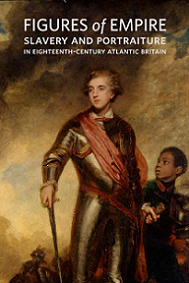
Figures of Empire - Slavery and Portraiture in Eighteenth-Century Atlantic Britain
Between 1698 and 1807, roughly eleven thousand British ships transported at least three million enslaved men, women and children from Africa to European colonies in North America and the Caribbean. While slavery itself was not new, the scale and profitability of the Atlantic slave trade, which the British came to dominate in the North Atlantic, was unprecedented. Goods from Europe and Asia were exchanged for enslaved Africans, who were forcibly carried to colonial plantations. There, in brutal conditions, they laboured without pay to produce crops - mainly sugar and tobacco - which were shipped back to Britain for sale. The art of portraiture was one ke yway in which Britons negotiated their relationship to slavery. Many of the white `sitters' in this exhibition chose to be portrayed alongside black servants, who were often explicitly identified as their chattel slaves. By the end of the century portraiture would also become a means for some people of African descent w ho crossed the Atlantic aboard slave ships to forge new identities as both African and British,,,
